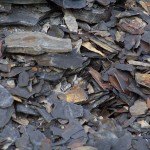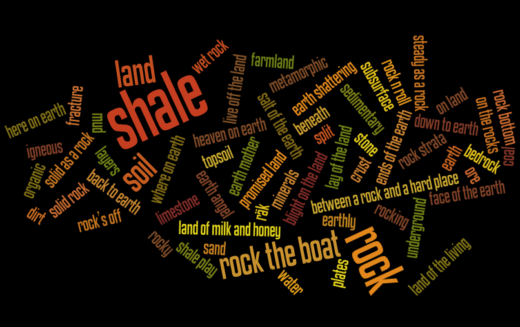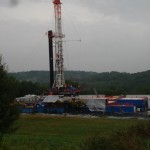Rock. Earth. Shale.
What lies beneath our feet.
The Marcellus Shale Formation
Shale is where the pockets of natural gas are located. It’s the site of the gas and the territory where the extraction for natural gas occurs.
- The earth contains an abundance of resources, gems, minerals, and metals. Are we entitled to all of these and at any cost?
- Who decides?
- Why is the earth beneath our feet important?
- Did you know what was under the soil where you grew up?
- Why are we talking about shale now?
- What is this Marceullus Formation I hear so much about?
- Would drilling in the Marcellus shale affect me?
- Where do you go when you want to be in nature?
- How would you feel if your surrounding environment changed?
Why is shale important? Read about it below and let us know what you think by joining in the conversation.
ROCK
Igneous, sedimentary, and metamorphic are the three major types of rock. Igneous rock forms from solidified magma. This rock can be eroded, broken up, and redeposited to then form into a sedimentary rock, or be formed into a metamorphic rock by heat and pressure. Sedimentary rock can be turned into a metamorphic rock due to heat and pressure, and the metamorphic rock can also be broken up and form into a sedimentary rock. Each rock type may be re-melted to form new magma, and then may again crystallize into an igneous rock.
SHALE
Shale is a fine-grained, sedimentary rock composed of a mix of mud and clay and small pieces of other minerals, especially quartz and calcite.
The shale beds form a seal that seals in natural gas reservoirs.
THE MARCELLUS SHALE FORMATION

Marcellus shale, up close
The Marcellus Formation is a shale formation that extends throughout much of the Appalachian Basin of the Eastern US. The shale was named for a large outcrop near the town, Marcellus, NY. The shale contains many untapped natural gas reserves.
The term “Marcellus Shale” was established in the first New York State Geographical Survey in 1893.
The Marcellus Formation is a black shale that may contain limestone beds and concentrations of iron pyrite, siderite, pyrite, sulfur, and uranium. Shale beds that are exposed close to the surface pose the risk of emitting radon as an air pollutant.
The Marcellus formation was relatively dated to have been created 391.9 to 383.7 million years ago.
Fossils can be found in the shale. For example, the oldest known collection of thin-shelled mollusks with well preserved shell microstructure was found in the Marcellus shale, as well as goniatites, an extinct shelled swimmer similar to a squid, and fossils of the trunks of conifer trees that floated out to sea and were preserved in the black shale.
WHERE IS THE MARCELLUS SHALE?
“The Marcellus is found throughout the Allegheny Plateau region of the northern Appalachian Basin of North America. In the United States, the Marcellus shale stretches across the Southern Tier and Finger Lakes regions of New York, in northern and western Pennsylvania, eastern Ohio, through western Maryland, and throughout most of West Virginia extending across the state line into extreme western Virginia. The Marcellus bedrock in eastern Pennsylvania extends across the Delaware River into western New Jersey. It also exists in a portion of Kentucky and Tennessee. Below Lake Erie, it crosses the border into Canada, where it stretches between Port Stanley and Long Point to St. Thomas in southern Ontario.”
- The Marcellus shale formation covers about 60% of Pennsylvania’s total area.
- The Marcellus formation stretches 600 miles.
- The shale beds run from a thickness of 890 ft in New Jersey to 40 ft Canada.
- The majority of the Marcellus shale lies more than a mile below the surface.
NATURAL GAS IN THE MARCELLUS SHALE
The natural gas is produced by the decomposition of organic materials, which are placed under pressure from being buried deep beneath the earth’s surface. Most of the gas stays in porous spaces in the shale, and flows through fractures in the rocks.
The United States Geological Survey had estimated that the Marcellus contained only 1.9 TCF (Trillion Cubic Feet) of recoverable natural gas in 2002. In April 2009, the United States Department of Energy estimated the number to be 262 TCF.
Gary Lash, a geology professor at the State University of New York at Fredonia, calculates the Marcellus shale beds to contain more than 490 TCF of natural gas. He believes 10% of that is recoverable (49 TCF), which is enough to fulfill two years of the US’s need for natural gas, at a value of approximately one trillion United States dollars.
NATURAL GAS DRILLING IN THE MARCELLUS SHALE
Vertical wells have been drilled in the shale for many years, however, the amount of gas produced was often not substantial. However, since horizontal fracturing has been introduced, the outlook has changed. Horizontal drilling allows access to more of the oil flowing within the vertical fractures in the shale. Additionally, the fracturing process creates more fractures in the shale, which allows more gas to flow out of the porous rock. Some of the new wells have produced over one million cubic feet of natural gas per day.
The horizontal drilling and hydrofracking techniques were perfected for shale reservoirs a few years ago in the Barnett Shale of Texas. The method was then applied in other shale formations such as the Fayetteville Shale in Arkansas, the Haynesville Shale in Louisiana, and now the Marcellus shale in the Appalachians.
A Marcellus well pad will be 3 to 6 acres, with the possibility of additional water storage pits or parking lots for tanker trucks.
EARTH MYTHS AND LEGENDS
Hades: refers both to the ancient Greek underworld, the home of Hades, and Hades himself, god of the underworld. Hades, and his brothers, Zeus and Poseidon defeated the Titans and claimed to rule the cosmos, ruling the underworld, air, and sea, respectively.
In Greek mythology, Gaea is a Greek goddess personifying the Earth, the Greek version of “Mother Nature” or mother of the earth.
In ancient Egypt, Geb was a god of the earth and fertility. Earthquakes were thought to be a result of Geb’s laughter. As god of the earth, he also reigned over the contents of the earth, including precious stones and minerals.
Sources/Links
http://www.frackcheckwv.net/impacts/
http://marcelluscoalition.org/pa-map/
http://geology.com/articles/marcellus-shale.shtml
http://en.wikipedia.org/wiki/Marcellus_Formation
http://en.wikipedia.org/wiki/Geology



